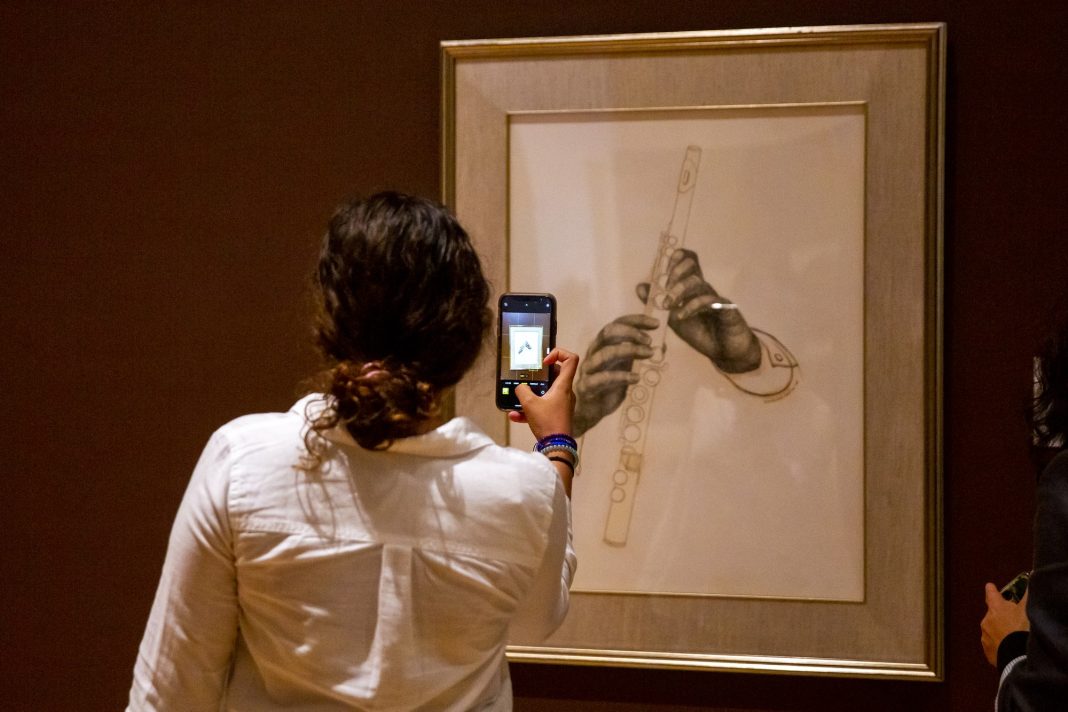
The Lowe Art Museum, University of Miami’s on-campus museum, does not assign value to works in their possession other than for functional purposes. This decision to forgo monetary value may seem shady to art world outsiders, but in reality, museums often conceal a work’s monetary value to emphasize and respect the intangible value and nature of the art.
“Our primary mission is education,” said Jill Deupi, the chief curator of UM’s Lowe Art Museum. “I think that talking about the monetary value of something distracts and dilutes what we’re trying to achieve entirely.”
The Lowe Art Museum discontinued its entry fee in 2020; guests previously paid $12.50 to enter the on-campus museum. In line with their sole mission to educate, Deupi believes this no-cost value should apply to all aspects of the museum.
Museums typically assign a numerical value to a work for two functional circumstances — the accepting of gifts and insurance purposes. The Lowe does not acquire art by purchase, often due to lack of funds.
In 2019, the Lowe reported $210,951 in non-cash contributions, the donation of money transferred through several methods such as property, collectables and art.
If a museum purchases a piece of art, the director or curator will know the exact value of the piece because they paid for it. Instead, the Lowe accepts gifts and borrows works that are properly vetted and appraised.
Under the U.S tax code, individuals can write off charitable gifts, like artwork, above the $5,000 threshold. In these cases, donors must commission a professional art appraiser to provide a value based on historical market performance and other comparables.
“By law, we can’t recommend anybody. We can’t hire anyone. We can’t give an opinion. It all has to be through a neutral third party or someone who’s hired by the donor because obviously we have some skin in the game,” Deupi said.
Museum directors must also know the price of their pieces to properly insure their collection. However, it would be expensive and time-consuming to adequately appraise all 19,500 objects in the Lowe Art Museum. Consequently, the museum avoids storing its work in one place to spread the risk of loss and consistently insures around 20 of its most valuable items.
Even though the price of works is not made public, the Lowe houses works by many recognizable artists such as Banksy and KAWS. The worth of a Banksy averages from $140,000-$170,000.
For borrowed works and temporary exhibitions, a list of insurance documents that include the numerical value of the work must be filled out by the gallery and the lender to complete the transaction.
In the past, university museums have faced pressure at the hands of presidents and leadership to deaccession, remove, works to fund university endeavors. While this practice is not illegal, unethical use of proceeds goes against rules set by the Association of Art Museum Directors (AAMD), an accrediting body who sets the best professional practices guidelines.
By deciding to conceal the public release of the Lowe’s monetary value, Deupi is taking steps to protect the museum from external pressures.
“He [Dr. Wetenhall] and I were very worried that with the pressures of the pandemic, and closures and drop in income from museums that there would be this uptick in sales,” Deupi said. “But I’m delighted to say that we were mostly wrong.”
Following a lawsuit against Brandeis University in 2009, Deupi co-authored the Task Force for the Protection of University Collections with Dr. John Wetenhall, the director of The George Washington University Museum and The Textile Museum.
“It brings together representatives from the rest of the art museum alphabet soup to protect, as the name suggests, vulnerable collections by advocating on behalf of museums and museum directors.” Deupi said.
At Brandeis University, the University president lost his job trying to close the museum in an attempt to avoid the deaccessioning process. If there was no museum, there was nothing to remove and profits could be used anywhere. This resulted in an outcry from students, staff and the entire community.
The Brauer Museum of Art at Indiana’s Valparaiso University made headlines for deaccessioning works from their collection and using profits to fund new freshman dorms.
The AAMD recently clarified the regulations for deaccessioning. Museums can either use funds to replenish the collection or for direct care of collections.
If museums violate these guidelines, loss of accreditation is at risk. Smaller museums may not have the resources and flexibility to complete the accreditation process. The Brauer Museum of Art, for example, is not an accredited institution.
To the outside eye, the small museum in Indiana had nothing to lose.
Internally, it’s a different story. The museum now has a stained reputation in a world that functions on a system of borrowing and lending.
“The director certainly cares what AAMD thinks,” Deupi said. “His president, on the other hand, I’m quite confident really couldn’t care less. He’s got other pressing issues on his plate.”
According to Deupi, the publicity surrounding prices, value and profit distracts from the educational purposes of a college museum. The Lowe Art Museum values its ability to provide educational exhibits that expose students to various cultures and styles, at no cost.






